This entry was posted on miércoles, julio 11th, 2012 at 14:28 and is filed under Etnopaisaje. You can follow any responses to this entry through the RSS 2.0 feed. You can leave a response, or trackback from your own site.

Origen del maíz. Origin of maize.
…………
Origen del maíz.
.
.
.
Origin of maize.
………
Vamos a la tertulia del University College
..
.
Etnopaisaje.com
….
…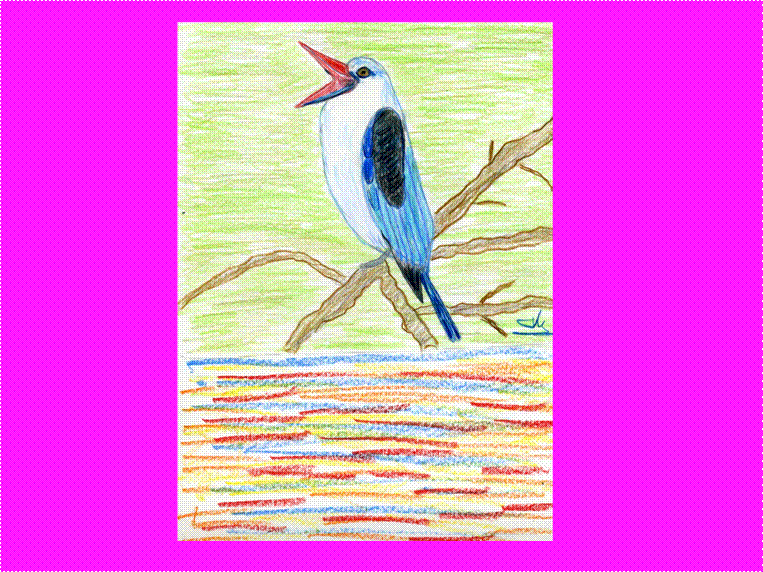
…
Interviene el moderador: El maíz (Zea Mays) es una planta gramínea anual, originaria de México, introducida en Europa durante el siglo XVI, después de la invasión española
..
.
El centro geográfico de origen y dispersión se ubica en el Municipio de Coxcatlán en el valle de Tehucán, Estado de Puebla, en la denominada Mesa Central de México a 2.500 m sobre el nivel del mar. En este lugar el antropólogo norteamericano Richard Stockton MacNeish encontró restos arqueológicos de plantas de maíz que, se estima, datan del 7.000 a. C.
…………
Teniendo en cuenta que ahí estuvo el centro de la civilización Azteca es lógico concluir que el maíz constituyó para los primitivos habitantes una fuente importante de alimentación. Aún se pueden observar en las galerías de las pirámides (que todavía se conservan) pinturas, grabados y esculturas que representan al maíz
………..
Mientras que los cereales del Viejo Mundo tienen variedades silvestres que se preservan en la naturaleza, el maíz es conocido solamente por la especie cultivada (Zea mays). Desde el siglo pasado diversas teorías han sido expuestas para explicar el origen y la evolución del maíz, la más popular de ellas acepta al teocintle de Chalco (Zea mays ssp mexicana) como el antecesor directo del maíz.
…..
Existen una serie de evidencias sobre la descendencia del maíz a partir del teocinte:
.
1) Igualdad en el numero de cromosomas (2n=20) y homología cromosómica.
.
2) Muchos genes del teocinte están presentes en el maíz.
.
3) Los cruzamientos entre teocinte y maíz dan descendencia fértil, en cambio maíz por tripsacum son estériles.
..
4) El teocinte se parece bastante a los mas antiguos maíces que se tienen registrados: plantas con varios tallos, yemas laterales que desarrollan espigas, espigas pequeñas, etc
……
.
,
.….
Involved moderator.Maize (Zea mays) is an annual grass plant, originally from Mexico, introduced in Europe during the sixteenth century, after the Spanish invasion
…..
The geographic center of origin and dispersal is located in the Municipality of Coxcatlan in the valley of Tehucan, State of Puebla, in the so-called Mesa Central of Mexico at 2,500 m above sea level. In this place the American anthropologist Richard Stockton MacNeish found archaeological remains of maize plants, it is estimated, dating from 7000. C.
……………..
Taking into account that there was the center of the Aztec civilization it is logical to conclude that the corn was for the primitive inhabitants an important source of food. You can still see in the galleries of the pyramids (that are still preserved) paintings, engravings and sculptures that represent the corn
………………
While grains of the Old World have wild varieties that are preserved in the nature, the corn is known only by the species cultivated (Zea mays). Since the last century various theories have been put forward to explain the origin and evolution of the maize, the most popular of them accept the Chalco teosinte (Zea mays ssp. mexican) as the direct ancestor of maize.
…………..
There are some evidences of the progeny of maize from teosinte: 1) Equal number of chromosomes (2n = 20) and chromosomal homology. 2) Many of teosinte genes are present in maize. 3) The crosses between teosinte and maize are fertile offspring, however maize Tripsacum are sterile. 4) Teosinte closely resembles the oldest corn that have registered: plants with several stems, lateral buds that develop spikes,
…….
…..
….
Recogemos algunas partes del artículo de Investigación y CIENCIA .Octubre 1986,a modo de resumen
……………
…………

……..
…..
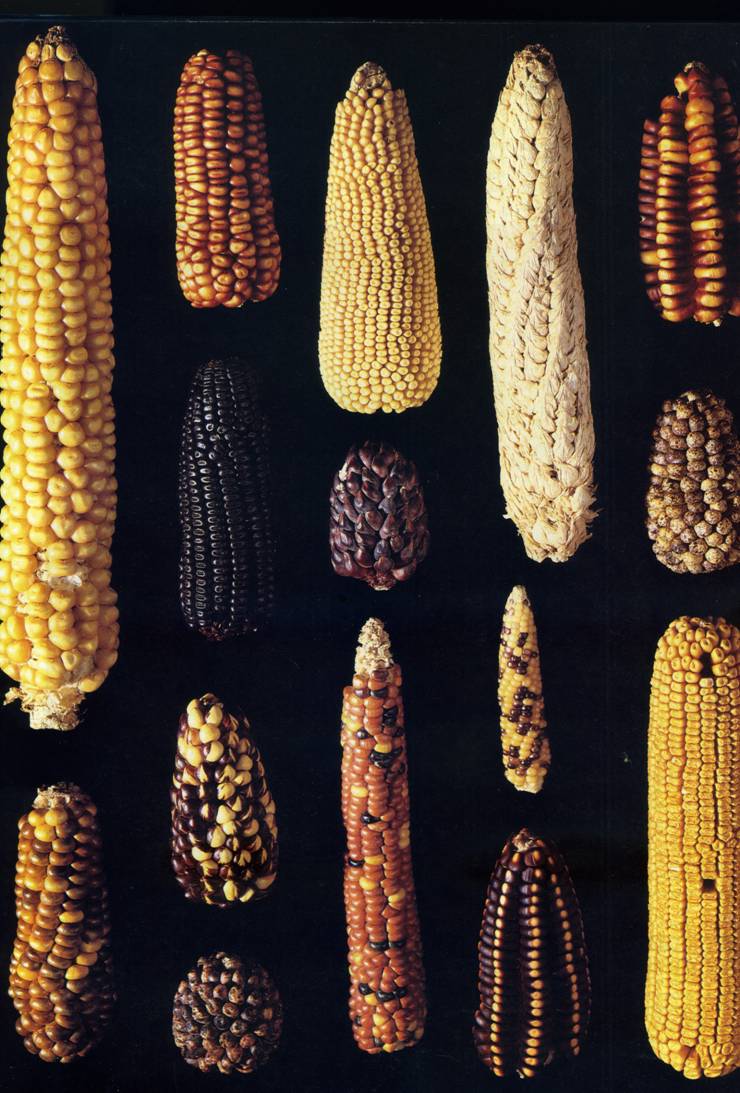
……
…….

………….
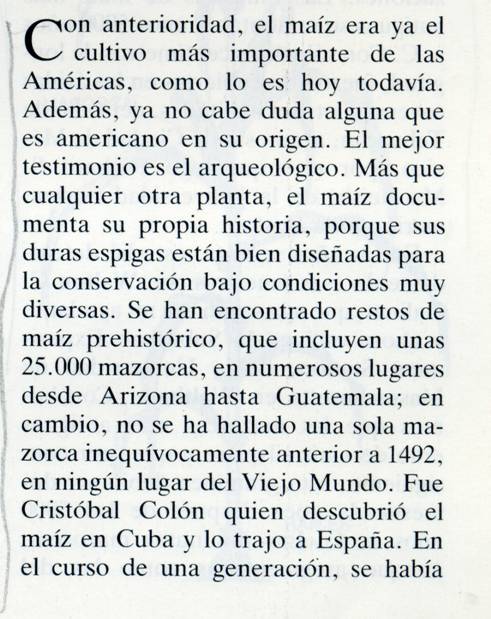
……..
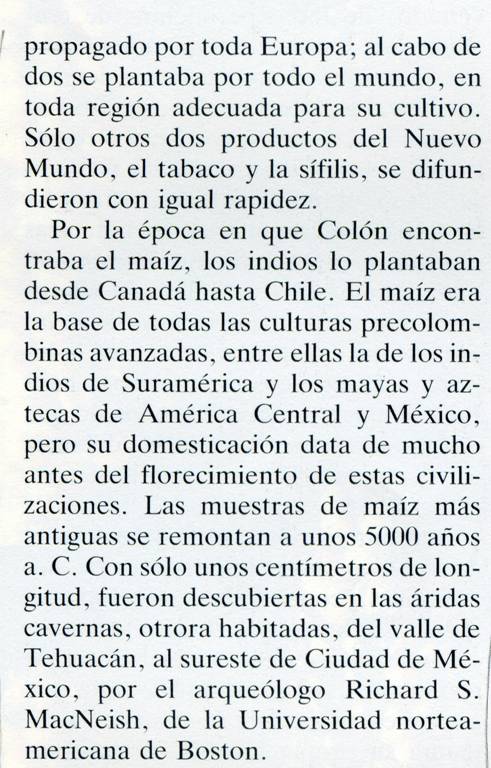
………
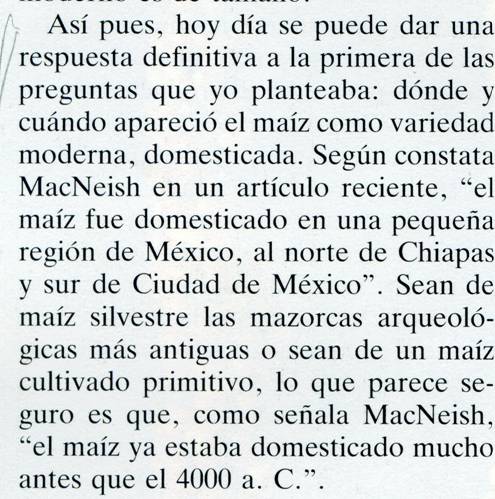
…..
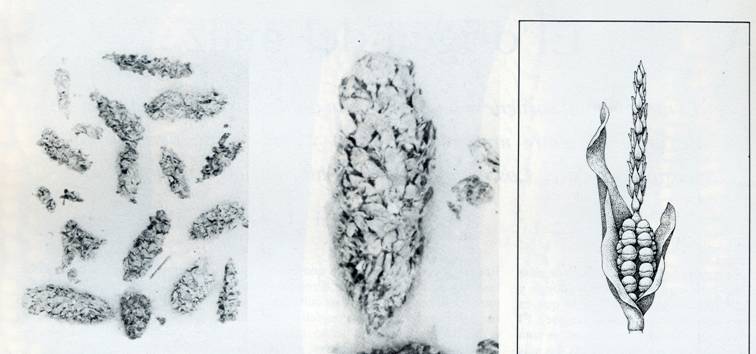
………..

…………

…………..
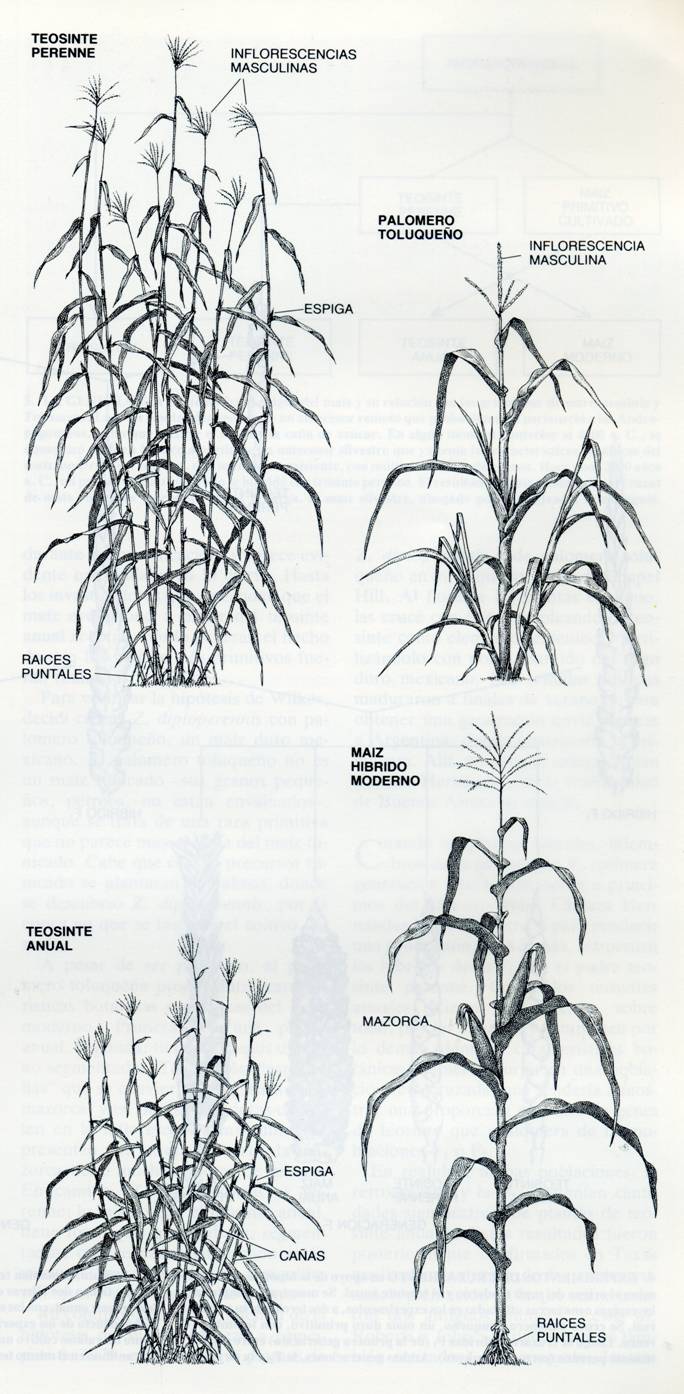
………….
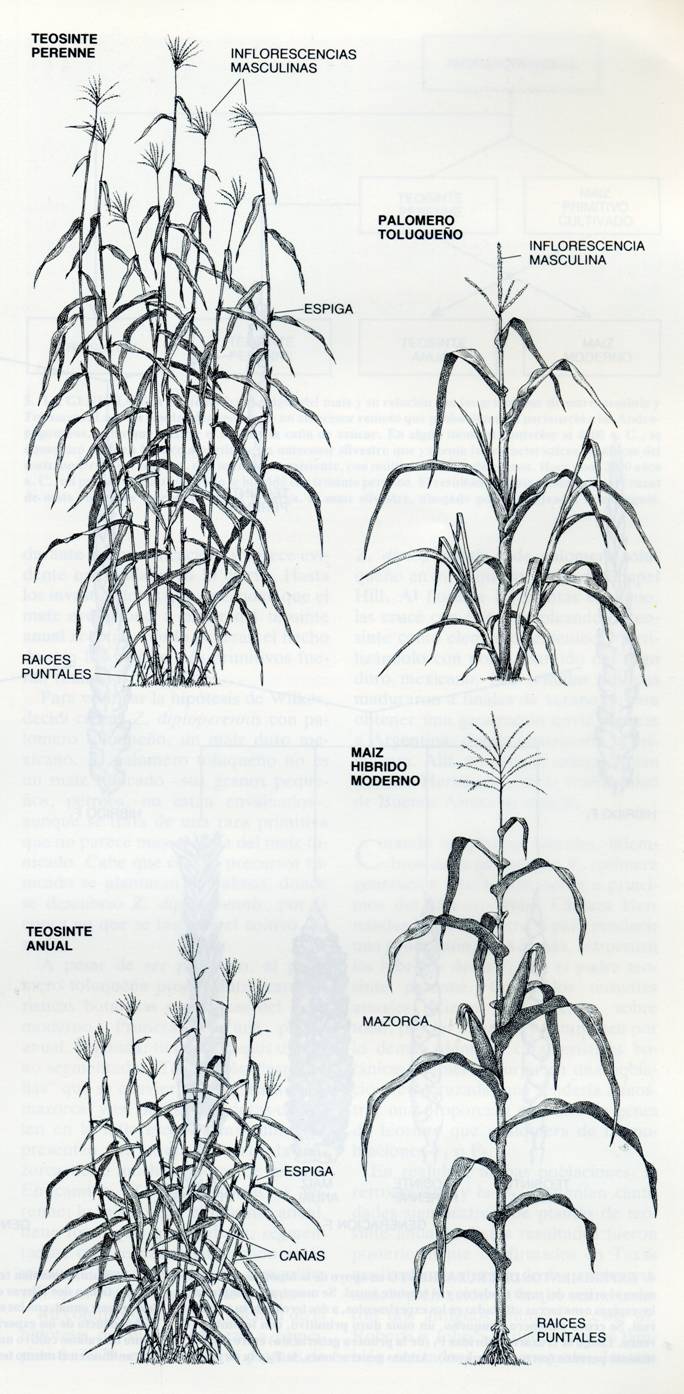
…..
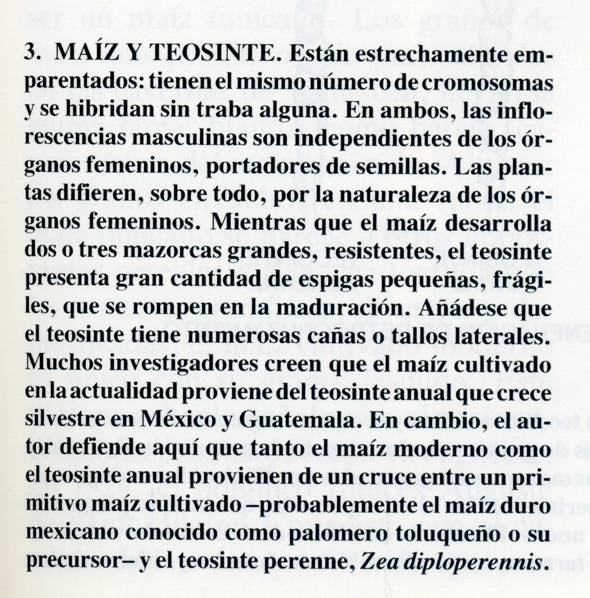
……………..
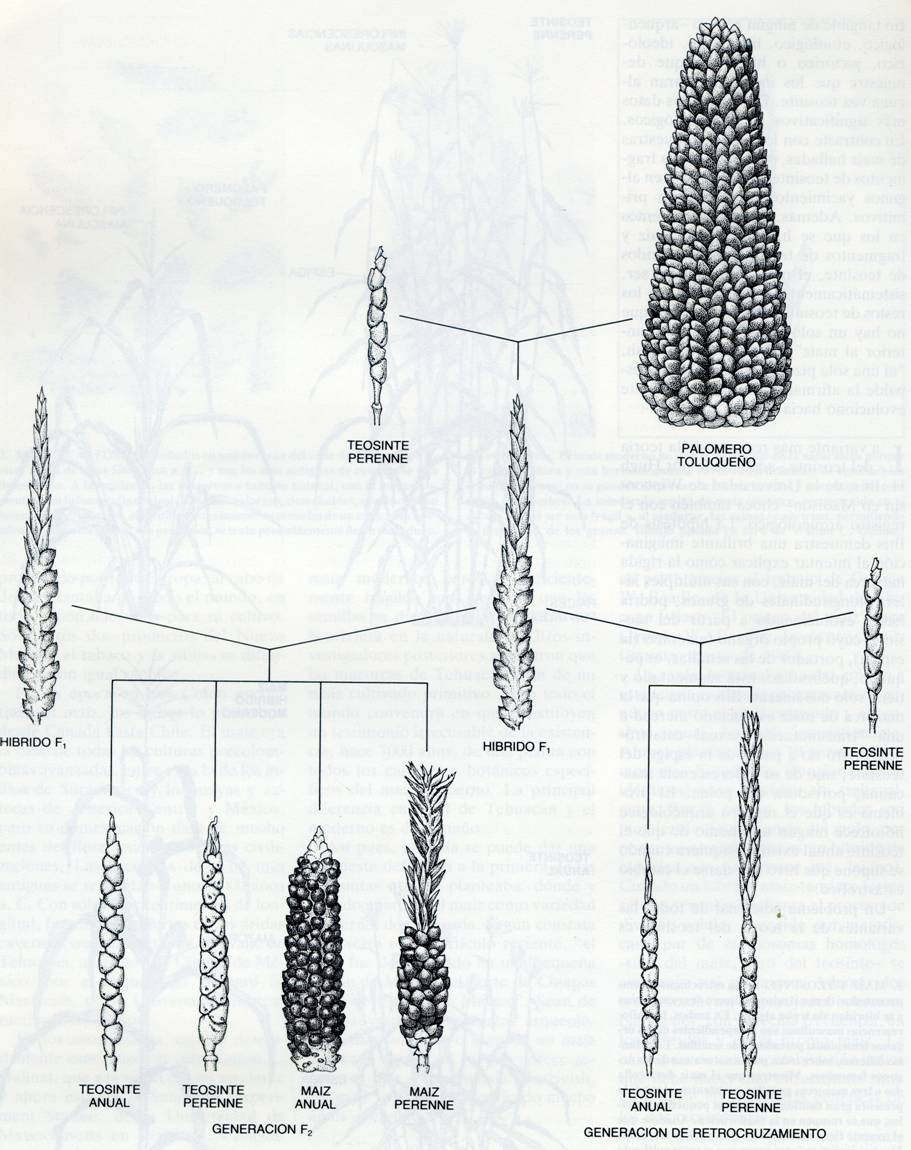
……………
 …………
…………

……………
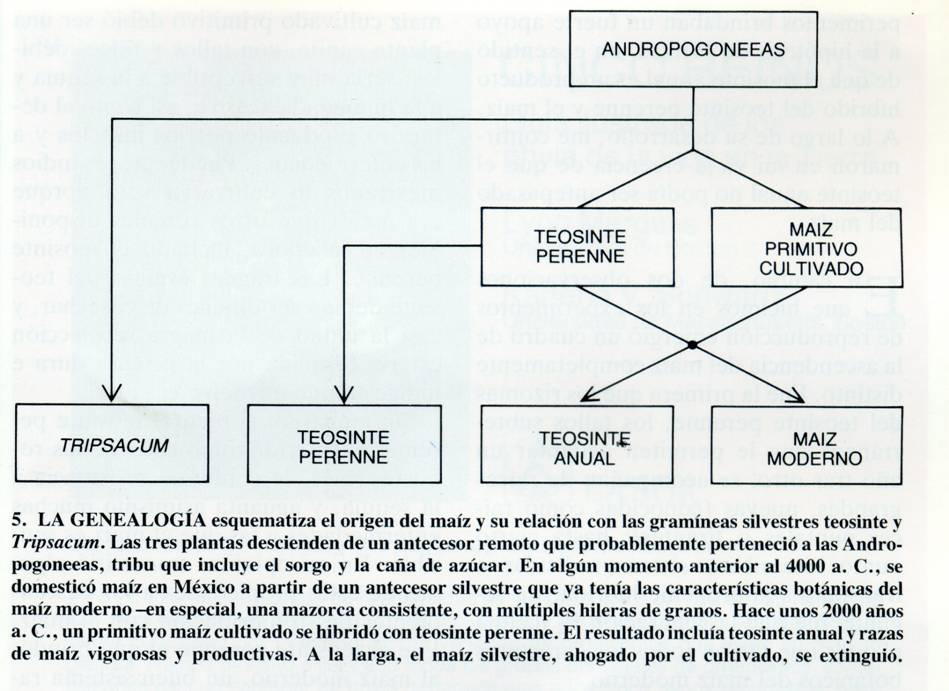
…………